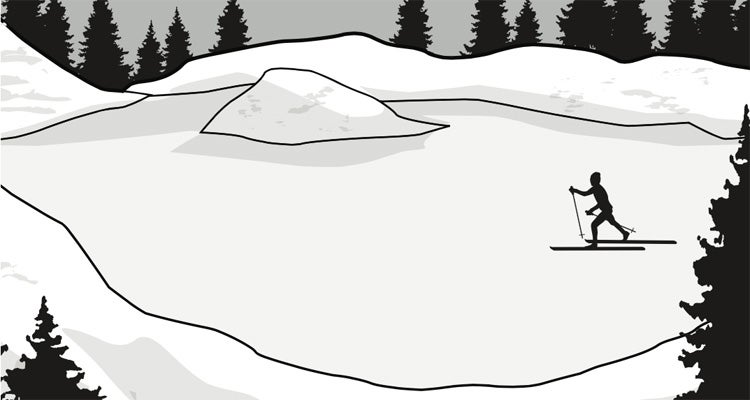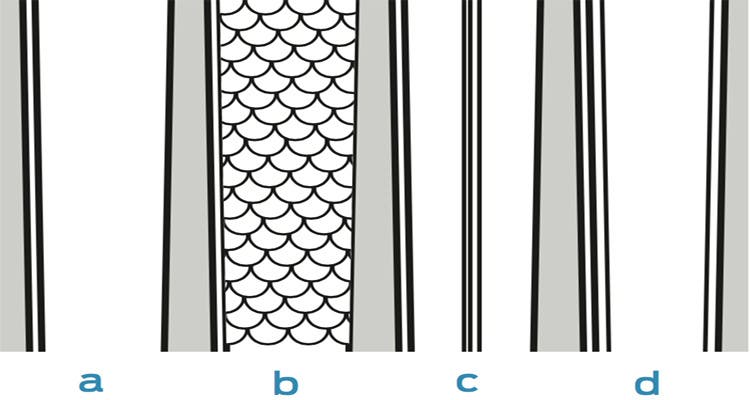Winter Skills: Cross-Country Skiing

'Cross-country skiing provides the perfect balance between speed and savoring the sights. Illustrations by Supercorn'
Alpine skiing is all about the thrill; snowshoeing, well, like hiking, that’s about taking it slow. But if you’re after the perfect balance between speed and savoring the sights, sounds, and Christmas-tree smells of the winter world, then go straight for the middle way on a pair of cross-country skis. Kick and glide your way through the woods and across mountain slopes, floating through the miles with time to enjoy every snowy view, and you’ll know: Not too fast, not too slow, the skinny-ski tour is just right. —Elisabeth Kwak-Hefferan
The Rules
From a cross-country skier to everyone else…
(1) Don’t walk in or otherwise ruin the ski track.
(2) See #1.
Know Thyself
There are three types of cross-country skiing disciplines.
- Classic skis—long, narrow, and lightweight—lack edges, making them best for moderate terrain.
- Skate skis are a little stiffer and a little shorter than classics. They’re designed for groomed tracks, so avoid these if you plan on breaking any trails.
- Short and equipped with metal edges, Nordic skis handle ungroomed and hilly terrain best of all types.
Gear Up

Bases
If you want to deal with fine-tuning wax for different objectives and conditions, go waxable (a). If not, go waxless and choose one of the following traction options for your base. Fish scales (b) etched into the base grip snow OK, but aren’t effective on ice or steep inclines. In below-freezing temps, zeros (c), which have a rubber material underfoot that you manually sand to create grippy “hairs,” provide the best traction. Skis with built-in skins (d), or small, furry mohair patches underfoot, give the most reliable grip, but are the slowest when gliding.
A Proper Face-Plant
Downhill pitch
+
Lapse of focus
–
Metal edges
=
Tangle of legs. Find your tips, align into “french fry,” and pop up.
Glide This Way
Think of your arms as pistons: They provide the momentum to keep you coasting between kicks. As the right ski goes forward, reach with your left pole.
In classic skiing, bend your knees slightly and kick one foot forward. Pull the other one ahead to meet it. As you transfer your weight to the other ski, you’ll glide.
If you need to brake, make a pizza with your ski tips, weighting the inside of your skis. You’ll have the urge to lean back, but force yourself to stay over your feet for better stability.